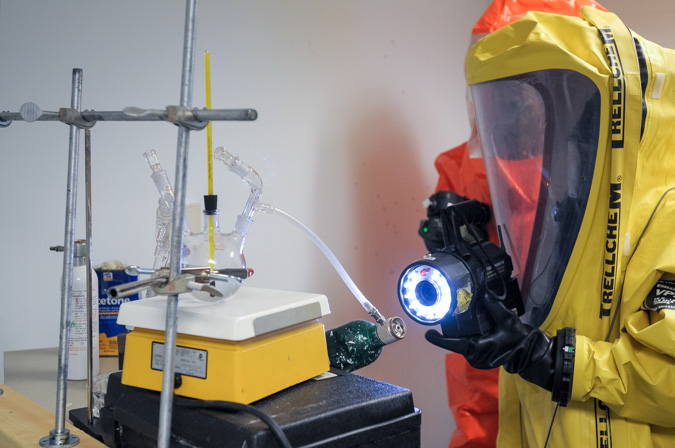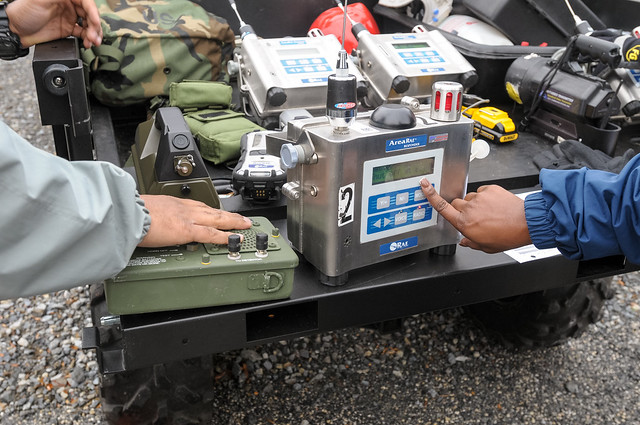32nd CST trains at Walter Reed
By Staff Sgt. Thaddeus Harrington, Maryland National Guard Public Affairs Office
The Maryland National Guard’s 32nd Civil Support Team participated in a training exercise on Nov. 6, 2014, at the Walter Reed Army Medical Center, in Washington, D.C. The unit’s performance was assessed by Army North evaluators.
Members of the 32nd prepare sensors that will be placed around the suspected hot zone. These sensors detect specific gasses and alert the unit of the hazards.
The unit consists of 22 full-time Soldiers and Airmen. Any member suiting up to enter the hot zone must be cleared by the physician and are monitored throughout the mission.
Staying properly hydrated is critical for those making entries. The members are required to consume a minimum of 16 ounces of water upon notification of a mission. Mission notification can come at any time and the unit must be ready to respond.
Communication with the entry team is important and ultra high frequency repeaters help extend communication between the entry team and headquarters. Their radio equipment allow for communication over large distances, below ground, and through ship hulls. The team members conducts periodic radio checks during their time down range in the hot zone.
Before proceeding down range, the members discuss decontamination and man down protocols.
The first entry team places sensors around the suspected hot zone.
The team uses specialized equipment to search the building for suspected hazards. They encounter a makeshift lab in one of the rooms. CST members are highly trained, ranging from identifying and mitigating hazards to crime scene preservation.
The team collected samples of the liquids in the beakers for analysis. The materials in this mock scenario aimed to give the detection of corrosive gases.
In addition to unknown chemical, biological, radiological, and nuclear hazards, the entry teams may encounter hostile people or improvised explosive devices. A mock IED was found in the server room. The entry team member marks the wall to alert others of the danger.
Although it rained during this training exercise, the unit setup a dry decontamination process for the teams exiting the hot zone. Dry decontaminations are used when their is limited access to water (like on the now abandoned Walter Reed Army Medical Center) and under certain weather conditions.













